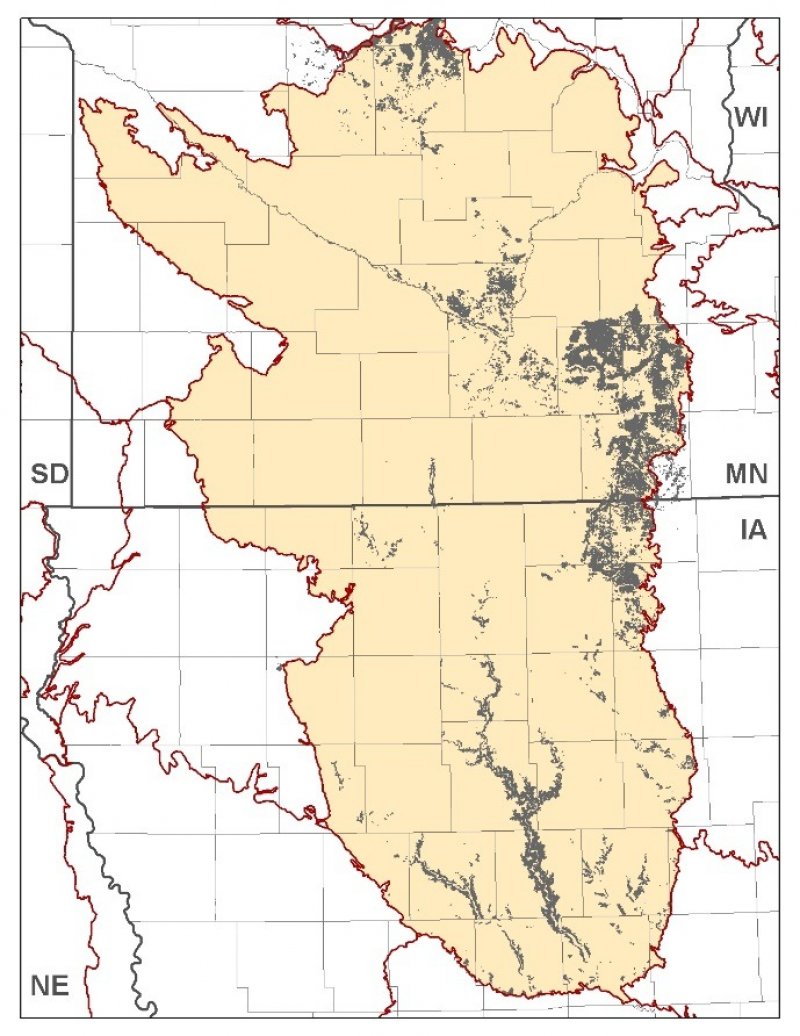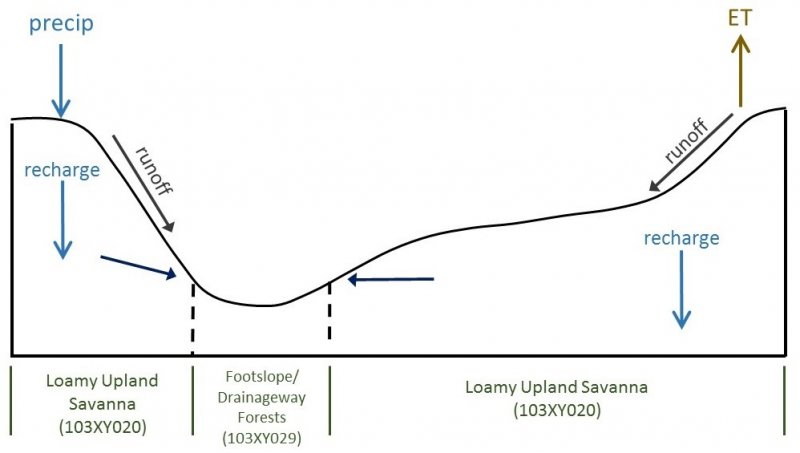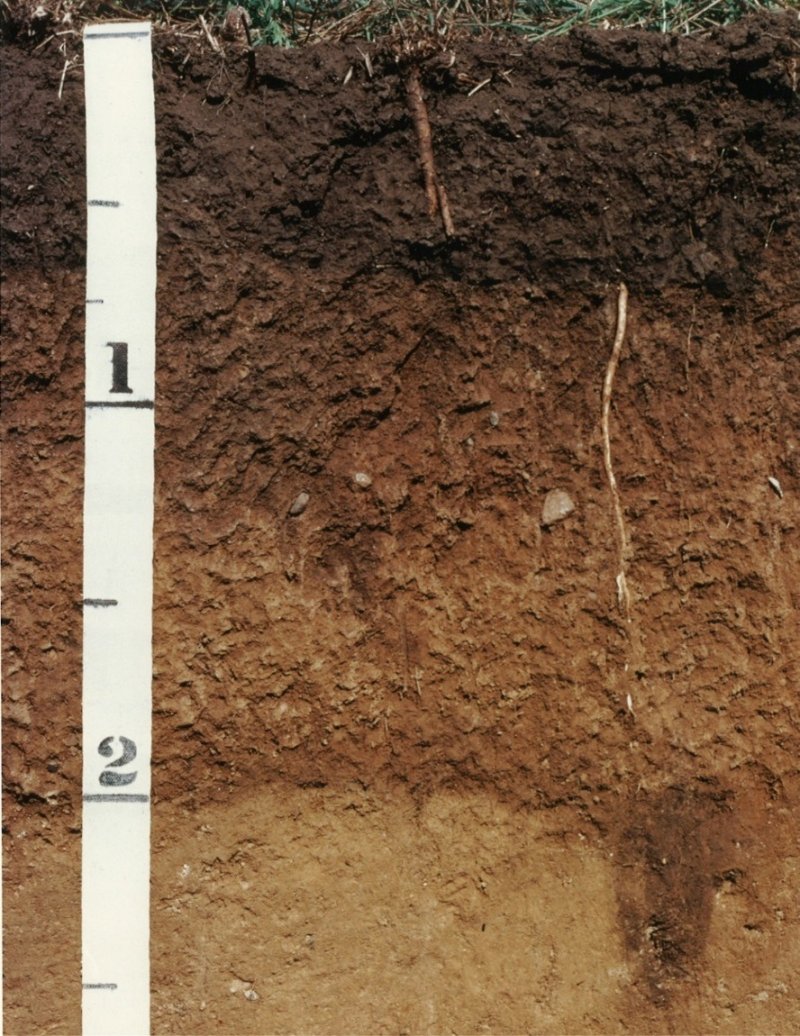
Natural Resources
Conservation Service
Ecological site R103XY020MN
Loamy Upland Savannas
Last updated: 10/04/2023
Accessed: 01/10/2025
General information
Provisional. A provisional ecological site description has undergone quality control and quality assurance review. It contains a working state and transition model and enough information to identify the ecological site.
MLRA notes
Major Land Resource Area (MLRA): 103X–Central Iowa and Minnesota Till Prairies
MLRA 103 is in Minnesota (56 percent) and Iowa (44 percent) and consists of approximately 18 million acres. It is in the Western Lake Section of the Central Lowland Province of the Interior Plains in an area known as the "Des Moines Lobe" of the Wisconsin-age ice sheet. The MLRA is mostly on a young, nearly level to gently rolling, glaciated till plain that has moraines and glacial lake plains in some areas. The plain is covered with glacial till, outwash, and glacial lake deposits. Recent alluvium consisting of clay, silt, sand, and gravel fill the bottoms of most of the major river valleys. Paleozoic bedrock sediments, primarily shale and limestone, underlie the glacial deposits in most of the area.
The annual precipitation increases from northwest to southeast. Most of the rainfall occurs as high-intensity, convective thunderstorms during the summer. Two-thirds or more of the precipitation falls during the freeze-free period. Snowfall is common in winter. Ground water supplies are adequate for the domestic, livestock, municipal, and industrial needs. Nearly all of this area is farmland, and about four-fifths is cropland.
Classification relationships
Major Land Resource Area (MLRA): Central Iowa and Minnesota Till Prairies (103) (USDA Handbook 296, 2006)
USFS Subregions: North Central Glaciated Plains Section (251B); Upper Minnesota River-Des Moines Lobe (251BA) and Southern Des Moines Lobe (251Be) Subsections (Cleland et al. 2007)
Relationship to Other Established Classifications:
The reference state shares similarities to the Minnesota Department of Natural Resources UPs24 Southern Mesic Savanna
Ecological site concept
The Loamy Upland Savannas ecological site is characterized by loamy soils that developed under a savanna landscape of native grasses and scattered fire-tolerant trees. Historically the plant community structure and composition was influenced by intermittent fire events. This ecological site is largely confined to areas directly south and west of the Big Woods ecoregion and along central and southern rivers in MLRA 103.
Associated sites
| R103XY022MN |
Loamy Wet Savannas The Loamy Wet Savannas ecological site is located on soils that are derived from fine loamy till. Soils are classified as poorly drained. This site occurs on morainal ridges or in slight concavities and linear segments with a slope of less than 2 percent. |
|---|---|
| R103XY012MN |
Wet Footslope/Drainageway Prairies The Wet Footslope/Drainageway Prairies ecological site are located on mainly on footslopes, toeslopes, and upland drainageways. The site concept incurs frequent to occasional extremely brief and very brief flooding. Soils drainage class is poorly drained. Reference vegetation is a wet prairie. |
Similar sites
| R103XY021MN |
Clayey Upland Savannas The Clayey Upland Savannas ecological site is characterized by a savanna community on soils derived from clayey till and lacustrine materials. Drainage class ranges from moderately well to somewhat poorly drained. |
|---|
Table 1. Dominant plant species
| Tree |
(1) Quercus macrocarpa |
|---|---|
| Shrub |
(1) Amorpha canescens |
| Herbaceous |
(1) Andropogon gerardii |
Click on box and path labels to scroll to the respective text.
Ecosystem states
| T1A | - | Tillage, planting |
|---|---|---|
| T1B | - | Absence of natural fire regime, increase in woody vegetation, and invasion of non-native species |
| R3A | - | Restoration activities |
| T3A | - | Tillage, planting |
State 1 submodel, plant communities
State 2 submodel, plant communities
| 2.1A | - | Establishment of grasses |
|---|---|---|
| 2.2A | - | Transition to row crop agriculture |




